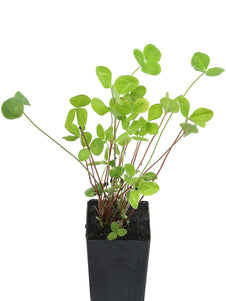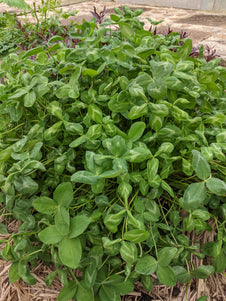







Red Clover
Red Clover

- In stock, ready to ship
- Inventory on the way

Usually available: All year
Life cycle: short lived perennial
Height: 30 - 80cm
Position: Full sun
Soil preference: Well drained
This is how we pack and send your Herb Plants to all states except TAS & WA
You will receive
- 1 Red Clover Herb Plant in a 50 X 75mm tube - General growing instructions
All of our Herb Plants are grown organically with certified organic potting mixes and fertilizers
Botanical Name: Trifolium pratense
Red clover is native to Europe, Western Asia, and Northwest Africa, but it has been naturalised and cultivated in many other regions throughout the world, including North and South America.
Red clover is a herbaceous, short-lived perennial plant that belongs to the legume family (Fabaceae). It is known for its dense clusters of pink-purple flowers and its trifoliate (three-parted) leaves, usually marked with a white or pale green chevron (v shape). The plant typically grows to a height of 20–80 cm. As a legume, red clover is also notable for its ability to fix nitrogen from the air into the soil through a symbiotic relationship with bacteria in its root nodules.
Red clover has been grown as a fodder crop for livestock for centuries, especially in Europe and Asia. It has a long history of use in traditional medicine in various cultures, often used as a treatment for skin conditions and respiratory problems and as a blood purifier. In the early 20th century, red clover was recognised as an essential cover crop and green manure in agriculture because of its ability to fix nitrogen and improve soil health.
Growing Conditions
Red clover prefers well-draining soil with a near-neutral pH and does well in soils with good organic matter. It grows best in full sun but can tolerate partial shade. Red clover is generally sown in spring or early autumn. It is a hardy plant and can thrive in a variety of climates, but it prefers temperate to subtropical regions. Regular watering is important during dry periods, but the plant is fairly drought-resistant once established.
Medicinal Uses
Red clover has a long history of use in herbal medicine. It is rich in various nutrients, including calcium, chromium, magnesium, niacin, phosphorus, potassium, thiamine, and vitamin C, and isoflavones (phytoestrogens, plant compounds similar in function to estrogen). Because of these isoflavones, red clover has been studied for its potential to help with menopausal symptoms, such as hot flashes and osteoporosis. Other traditional uses include treating skin conditions like eczema and psoriasis, respiratory conditions, and as a detoxifying agent.
Culinary Uses
Red clover flowers and young leaves are edible. The flowers are often used to make teas and can be added to salads for their sweet, mild flavour. The young leaves can be eaten fresh in salads or cooked like spinach. Its use in cooking is not as widespread as other herbs.
Precautions
Hemophiliacs, those with heavy menstrual bleeding, and people on blood thinners.
Hormone-related cancers.
During pregnancy and breastfeeding.
All information provided on this website is for informational purposes only. Please seek professional advice before commencing any treatment.





